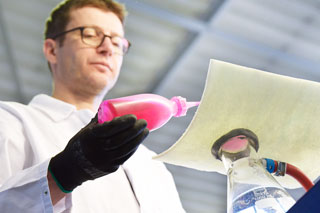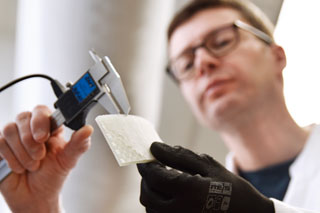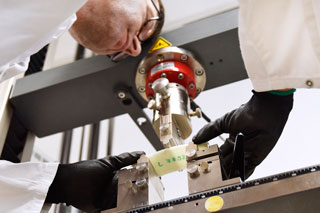IKT LinerReport 2018: Has Trend for Improving Quality Ended?
Fifteen years ago, IKT published its first LinerReport and has repeated this exercise every year since. Altogether, these reports include the test results from some 23,000 samples taken from installed Cured In Place Pipe (CIPP) liners in sewers. This represents sampling from an estimated 2 to 2.5 million meters of lining installed in rehabilitated sewers.
The samples used for the LinerReport are taken at sewer rehabilitation sites shortly after the installation of a CIPP lining and are then tested at IKT’s two materials testing laboratories, in Germany and in The Netherlands (since 2013). Four test criteria are applied: modulus of elasticity, flexural strength, wall thickness and water tightness.
2018 results
The latest IKT LinerReport includes more than 2,100 liner samples, taken at installation sites in 2018 for quality control purposes and examined by the IKT testing laboratories. As in previous years, the modulus of elasticity, bending strength, wall thickness and water tightness were determined for each site sample. In each case performance has been determined by comparing the test results with the expected target values derived for each sample from the relevant product approval (Germany: DIBt Approval; The Netherlands: KOMO certificate; Switzerland: QUIK guideline) or client information, e.g. static design calculations.
Download LinerReport 2018 here
The average proportion of passed tests results for the four test criteria remained at a high level in 2018 (mean values: 98.9%; 97.5%; 97.4%; 94.1%), similar to the previous year‘s level, with a very small improvement in the modulus of elasticity and very small declines in the other three criteria. 2018 was a good year overall for liner quality.
Samples passing all four test criteria
For about two thirds of the liner samples tested by the IKT testing laboratories in 2018, required target values for all four criteria were available. Only if all four target values are known, can a complete evaluation of the sample against all criteria be made. At least one target value was missing for one third of the samples. Of the total of 1,366 samples with all four nominal values, 90% met the requirement for all four test criteria. So, one tenth failed at least one test criterion.Members of the “100% Club“
Five lining companies managed to achieve a 100% pass for all four test criteria with all their samples in 2018. They are:
- Bluelight GmbH with PAA-F-Liner
- Hamers Leidingtechniek B.V. with Alphaliner
- ISS Kanal Services AG with Alphaliner
- Jeschke Umwelttechnik GmbH with Alphaliner
- Kanaltechnik Agricola GmbH with Brandenburger Liner
Conclusions: Preventing loss of quality
The IKT LinerReport has been reflecting the development of quality assurance for CIPP sewer lining since 2003/04. Looking back over the last 15 years, we can see a clear trend of improving quality, over about a decade until 2013/15, before stabilising. Since 2015, there has been a slight tendency for a decline in performance against the mechanical test criteria. Has the long-term improvement in CIPP sewer lining quality assurance ended?
A sign of declining quality assurance?
This claim seems premature at this time. However, the slightly declining average test results of the last three to four years indicate that it is not a given that a high level of quality can be maintained once it has been achieved. This could be interpreted as a sign of a possible reversal in the trend. There could be several reasons for this: an intensive struggle by the lining companies for market share in a market that is still very price-competitive, the development of new machinery and plant capacities, the entry of new market participants and, last but not least, the much-discussed shortage of skilled workers, which is particularly noticeable in the commercial sector. Much of this is speculative, so it remains to be seen how the markets develop.Sewer network owners must ensure quality assurance
In order to maintain a high level of CIPP liner quality, customers should make it clear to suppliers that quality is important to them and that they take the requirements of the relevant standards and regulations very seriously. In their function as network owners, they should commission independent testing themselves and insist on consequences in the event of negative test results.
Clients should make sure that they have CIPP liner installation checked so that there are no quality loopholes, which can prove to be very expensive in later years. Finally, they should pay much more attention to acceptance warranties, because then they will still have some control in the event of inadequate renovation work.
Download LinerReport 2018 here
IKT Test Centre for CIPP liners
Contact Persons
- Barbara Grunewald, M.Sc.
T: +49 (0) 209 17806-40
E-mail: grunewald@ikt.institute - Iain Naismith, PhD
T: +44 (0) 7983 605219
E-mail: naismith@ikt.institute


